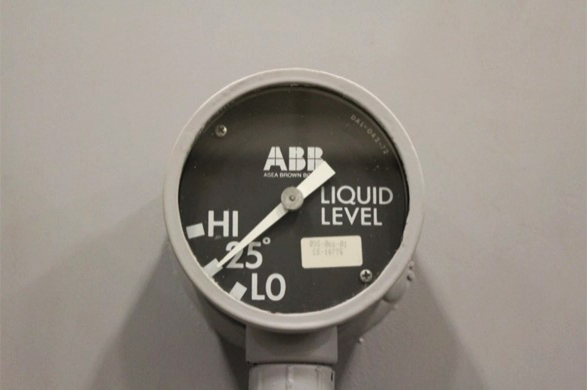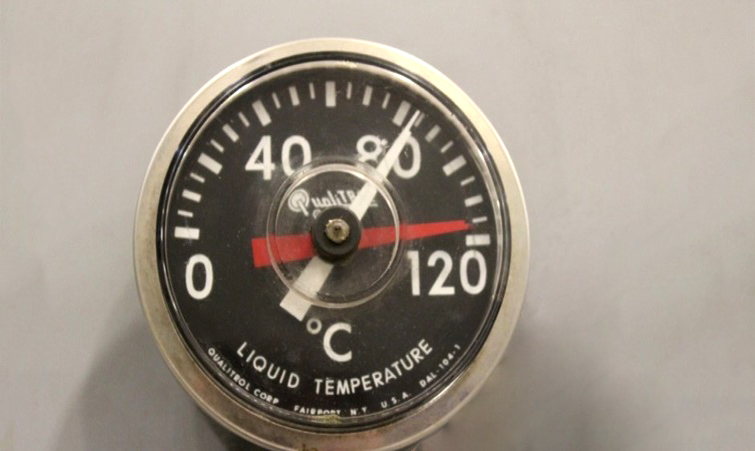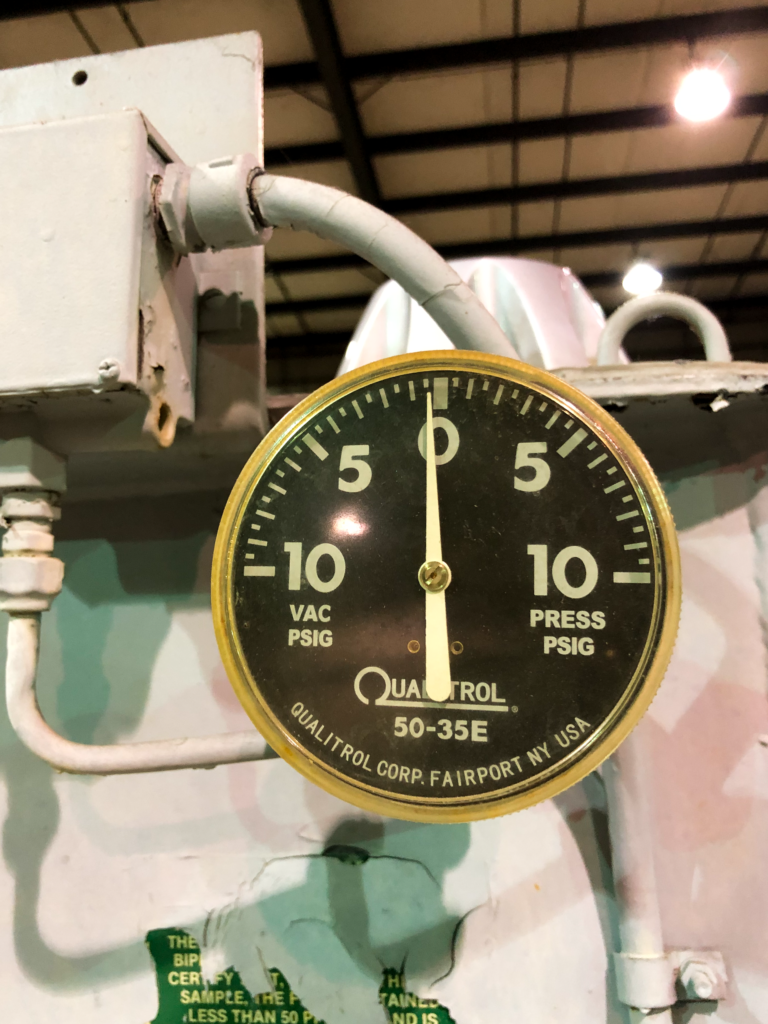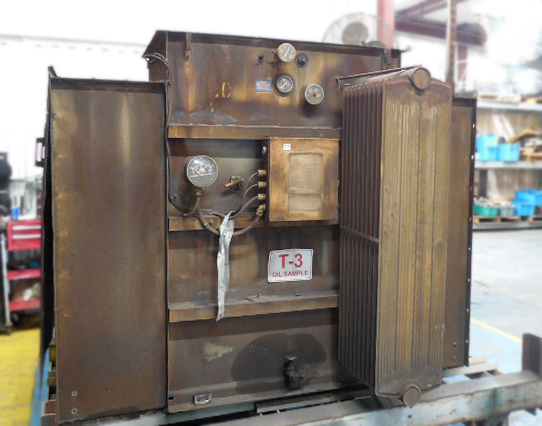By Mark Stone, Training Manager
3 Key Areas to Examine During a Transformer Visual Inspection
A thorough visual inspection is an important part of your transformer maintenance. You can perform your own inspection easily and cost-free if you know what to look for. At first glance, what do you see? A big (likely gray) box with various items attached to it, such as fans, radiators, bushings, and gauges. A closer look at these items can lead you to identify potential issues, avoid developing problems, and keep your equipment performing efficiently without interruption. The visual inspection of a transformer is as simple as going out and walking around the unit to look at three key areas: paint condition, leaks, and gauges.
1 – Check the Paint
Transformers receive paint and primer to slow down rusting and aid in cooling. Heat is one of the most devastating causes of premature aging of a transformer, and the harsh conditions of the atmosphere around your transformer can accelerate the rusting of the metal.
When performing a visual inspection of the paint, here are four issues to look for:
- Caulking – Caulking is a white film that develops on the paint caused by exposure to the sunlight.
- Cracking – Cracks in the paint are usually caused by the paint hardening and becoming brittle. Changes in temperature can also cause cracking as the metal expands and contracts.
- Peeling – Peeling is usually caused by moisture accumulating under the paint, causing it to flake.
- Rust – As the metal deteriorates it will start to rust (ASTM D610-08 Rust Guide). Rust will eventually cause pinholes and leaks.
All of these should be noted when you are doing your visual inspection. Keep it simple: note the paint conditions as good, fair, or bad.
2 – Look for Leaks
The most common places for leaks to develop are around welded areas, bushings, gauges, and de-energized tap changer handles. Gasketed areas are especially known to fail. Although there are no moving parts to a transformer, the windings do vibrate. This can cause bolts to loosen and develop leaks around inspection plates, bushings, and other bolted areas. Look out for holes that have formed above the current oil level as well. Although oil might not be visibly leaking in these areas, atmosphere is getting in, which means moisture and oxygen levels are increasing in your transformer. One of the best ways to determine if the unit has a leak is to look at the pressure/vacuum gauge.
3 – Read the Gauges
Typical transformers will have 3 gauges: temperature, level, and pressure/vacuum. While gauges are a great tool, it is important to remember that they do sometimes fail, so we do not trust them 100%.
Level Gauge

The level gauge has readings for high, low, and 25°C. To measure the level accurately, you will need to look at the temperature gauge as well. If the temperature gauge says the transformer is operating at 25°C, the level would be normal. If the temperature gauge reads 85°C (like the picture below), this level would be low. Oil expands as it heats up and contracts as the oil cools down. On a well-sealed unit, this is how you get vacuums.
Temperature Gauge

There are two different types of temperature gauges: oil and winding. When performing your visual inspection during oil sampling, provide the lab the top oil temperature. Some temp gauges have drag arms. If the drag arms are reset, they will tell you the highest temperature that the transformer has reached. Persistent high temperatures will shorten the life of your transformer. Some transformers have a thermostat that will kick the fans on and off as needed.
Pressure/Vacuum Gauge

If the transformer is well-sealed, you will get vacuums (left of the zero) and pressures (right of the zero). These vacuums are usually temperature-related. The oil gets hotter and expands as the ambient temperature and load increase. When the oil cools, it will contract. In the early fall and winter, the ambient temperature can be cold enough to cause vacuums. These temperature changes create pressure and vacuums. Remember that pressures and vacuums on our transformers tell us that we have a well-sealed transformer, indicating there are no leaks.
Signs of a Leak
If your pressure/vacuum gauge reads “0”, you should be concerned about a leak, but don’t panic before verifying the reading. Usually, when there is a leak you will see oil, but leaks can also occur above the oil level without oil visibly leaking out.
To verify the “0” reading, come back at different times of the day (or on different days) as the ambient temperature and load increase and see if the gauge moves into a pressure. If the level stays at “0”, you might want to pump a couple of pounds of dry air or dry nitrogen into the transformer and then proceed to watch the gauge for the next couple of days. If the pressure/vacuum gauge goes back to “0” and you see no visible oil leaks, you will want to have the transformer pressure checked to see where the leak is or if the gauge has gone bad.
Never try to sample a transformer that is under a vacuum. Air bubbles can be drawn into the transformer and become trapped in the winding and causing issues. Before sampling, you will need to relieve the vacuum with either dry air or nitrogen (ASTM Standard D-1933). This standard lists 3 types of nitrogen (N2 type l, II, and III) that can be used. Type 3 is the driest N2 and is preferred.
When to Perform A Visual Inspection
Out of the types of maintenance you can perform on an energized transformer (oil analysis, infrared scanning/ET, and visual inspection), visual inspection is the only step that does not cost anything. Depending on the size and the criticality of the transformer, oil testing and IR scanning can be done annually. You can complete your visual inspection annually, or as often as you wish. If you have generator step-up or furnace transformer or a transformer that is extremely critical to your operation, you should schedule oil testing and visual inspections more often (up to 4 times a year).
Southwest Electric Co. is here to help with your transformer maintenance to keep your facilities running as efficiently as possible. Give us a call or email us with any questions you have, or to schedule your regular testing and needed repairs.

